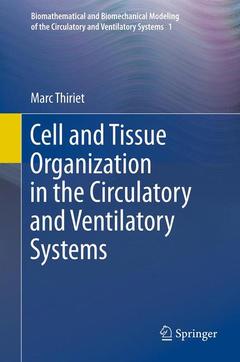Description
Cell and Tissue Organization in the Circulatory and Ventilatory Systems, 2011
Biomathematical and Biomechanical Modeling of the Circulatory and Ventilatory Systems Series, Vol. 1
Author: Thiriet Marc
Language: English
Subjects for Cell and Tissue Organization in the Circulatory and...:
Approximative price 105.49 €
In Print (Delivery period: 15 days).
Add to cartPublication date: 07-2013
736 p. · 15.5x23.5 cm · Paperback
Publication date: 09-2011
736 p. · 15.5x23.5 cm · Hardback
Description
/li>Contents
/li>Comment
/li>
The volumes in this authoritative series present a multidisciplinary approach to modeling and simulation of flows in the cardiovascular and ventilatory systems, especially multiscale modeling and coupled simulations. The cardiovascular and respiratory systems are tightly coupled, as their primary function is to supply oxygen to and remove carbon dioxide from the body's cells. Because physiological conduits have deformable and reactive walls, macroscopic flow behavior and prediction must be coupled to nano- and microscopic events in a corrector scheme of regulated mechanisms. Therefore, investigation of flows of blood and air in physiological conduits requires an understanding of the biology, chemistry, and physics of these systems together with the mathematical tools to describe their functioning.
The present volume is devoted to cellular events that allow adaptation to environmental conditions, particularly mechanotransduction. It begins with cell organization anda survey of cell types in the vasculature and respiratory tract. It then addresses cell structure and functions, especially in interactions with adjoining cells and matrix.
Introduction.- 1. Cells and Tissues.- 2. Cells of the Blood Circulation.- 3. Cells of the Ventilatory Tract.- 4. Cell Structure and Function.- 5. Protein Synthesis.- 6. Cell Cytoskeleton.- 7. Plasma Membrane.- 8. Extracellular Matrix.- 9. Intracellular Transport
References.- Notations: Aliases and Symbols.- Notations: Prefixes and Suffixes.- Biochemical, Medical and Physical Aliases.- Mathematical Symbols, Molecules, and Physical Quantities.- Index.




